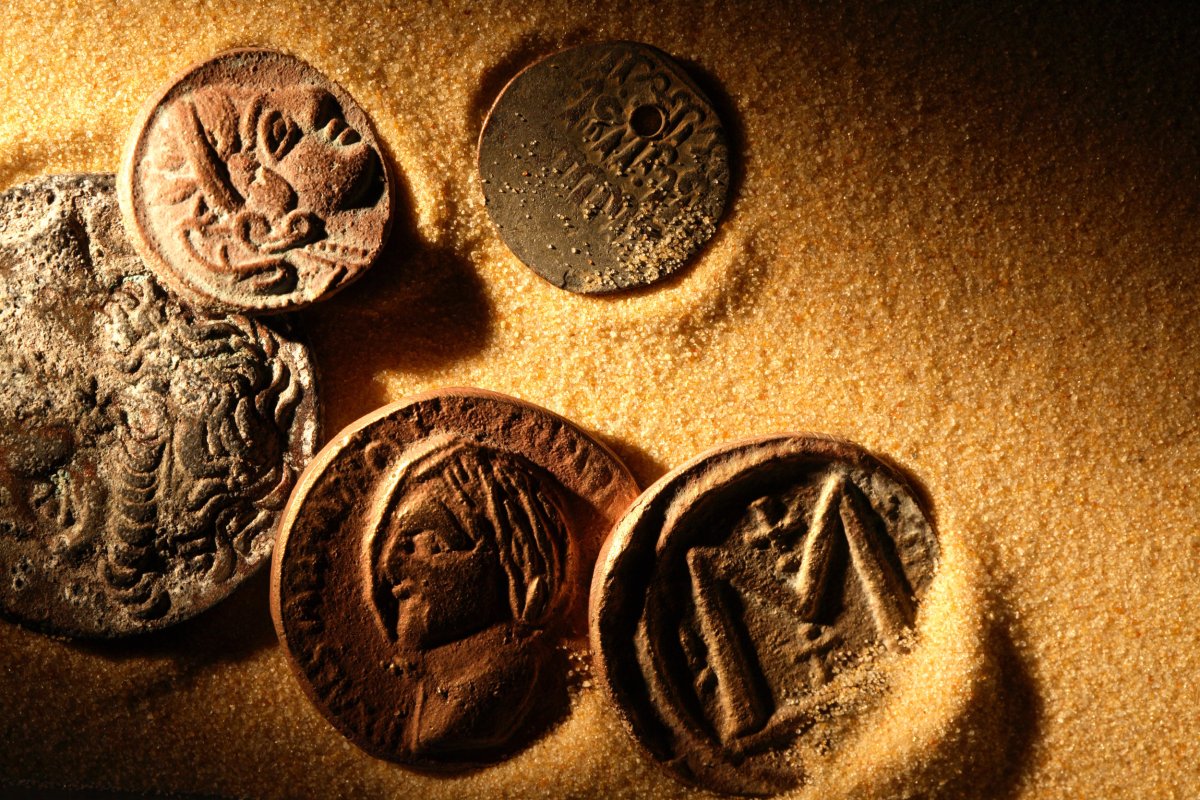Archaeologists have found dozens of pieces of 1,500-year-old treasure beneath an old pagan temple.
A total of 35 gold pieces have been found at the site of an ancient pagan house of worship in Vingrom outside Lillehammer, in Norway, local newspaper Dagsavisen reported.
The gold pieces, which are square and about the size of a fingernail, are incredibly thin, and engraved with women and men wearing grand outfits. Some consist of a couple turned towards each other, with a man on the left and a woman to the right, University of Oslo archaeologist Nicolai Eckhoff—who was involved in the dig— said on a Facebook post.
The pieces date back to the time of the Merovingian dynasty—the family that ruled over the Frankish Kingdom from the fifth century until around 751.
“Despite the fact that the gold nuggets are so small, the motifs have a striking richness of detail,” Eckhoff wrote on Facebook. “Usually the woman is dressed in a side dress, sometimes with a tow and a cape, and the man has a shorter skirt so that the feet are visible. He can also wear a cape, and both can wear jewelry, different hairstyles and hold different things like drinking cups, wands or rings in the hands or have hands to point to different gestures. The goldfinches are actually so detailed and varied that they are the source of studies of the time’s costume and iconographic studies.”
NEWSLETTERThe BulletinYour daily briefing of everything you need to know
The discovery of these gold pieces in Norway is extremely rare. There are only 10 known locations where they can be found, and usually under old places of worship.
“Most interpretations of gold guys mean that they have had a mythical or ritual meaning,” Eckhoff wrote.

Gold coins discovered by archaeologists. The pieces recently found in Norway may have been used for payment.KVKIRILLOV/GETTY
“And it is suggested that the gold nuggets with couple motifs reflect the hierogamy myth, the holy wedding between the habit god Frøy and the jotun daughter Gerd, or that they may have been used as an offering when celebrating a wedding or in fertility rituals,” Eckhoff added. “They can also be interpreted ideologically as representing the mythical ancestors or the descendants of chiefs and first families, and may then have served as an authentication of the ruling families’ power-political demands and ruling role.”
There is another theory that the gold pieces are a form of temple money.
“The gold nuggets found at this year’s survey are related to post holes and wall corridors. The fact that gold nuggets appear in buildings and in roof-bearing post holes is linked to that it could be a house sacrifice, a marking of a high seat, a hall or a cult house,” Eckhoff said.





